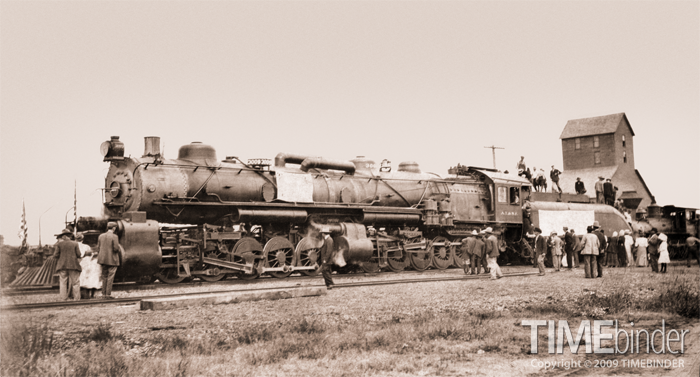Steam Giants Prowl The Earth
 Saturday, August 22, 2009 at 8:39AM
Saturday, August 22, 2009 at 8:39AM 
From another real photo postcard, 1913, is this Achison, Topeka and Santa Fe 2-10-10-2 Mallet locomotive numbered 3009 – the last of the ten that were built. Beginning in 1911, the railroad converted normal 2-10 Mallets into this huge compound configuration, but rather than being truly two engines, what appears to be the second steam boiler is actually a superheater of sorts, a reheater and a feedwater heater. The design proved to be unsuccessful and the company reconverted all ten engines to their original configuration between 1915 and 1918.
In 1918, the Virginian railroad had true compound articulated 2-10-10-2 engines built which were so successful that they were used right into the 1950s. Union Pacific built a 4-8-8-4 compound nicknamed the "Big Boy", but most companies like Norfolk & Western settled on 2-8-8-2 compound articulateds (N&W Y6B) as the preferred configuration which eliminated the need for doubleheading on long grades and were well-suited to hauling coal in mountainous terrain.
AT&SF obviously used the incredible size of this engine for promotional purposes (the banners are not readable, perhaps because the photographer was selling an unsanctioned postcard); it is also interesting to note that the locomotive sitting immediately behind the Mallet is a small engine (4-4-0 or 4-6-0 ?) that was even then a notable antique (the diamond stack had not been used much after the late 1870s), perhaps to further highlight the sheer size of the Mallet. Surely it was remarkable that locomotives had progressed to this stage in the years since 1829, though not quite the phenomenon as from the Wright brothers' plane in 1903 to the moon in 1969.






